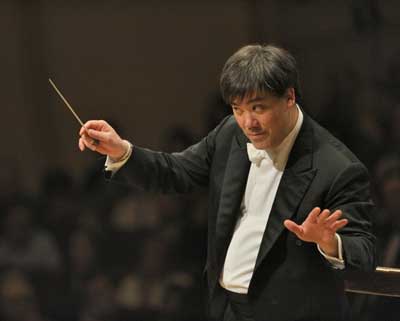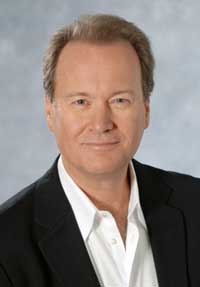
Had you been in New York on May 5, had an interest in seeing a top-tier symphonic performance, and had an extra $50-$180 to spend, you might have been seated on one of five levels inside Carnegie Hall to watch and hear fabulous music.
Those stars weren't in alignment for most of us. But PBS' Great Performances was there for the celebration of Carnegie Hall's 120th anniversary, featuring A-list talent. And now we have what might be better seats than any offered at the box office.
Carnegie Hall 120th Anniversary Concert (Tuesday 8-9:30 p.m. ET in many markets; check local listings) does perfectly what television does better than any other medium: Get people wonderfully close to the performing arts. The New York Philharmonic, conducted by Alan Gilbert, returned to its pre-Lincoln Center home for the event. Cellist Yo-Yo Ma, violinist Gil Shaham and pianist Emmanuel Ax were the featured instrumentalists. Audra McDonald was the vocal soloist.

And though home speakers may not match the hall's famous acoustics, our perspective is superb. Attendees mostly saw Gilbert's back. We see his expressions and delight as he conducts the evening's music. We see close-ups of all of the principals' faces, reflecting emotions that define their performances.
We see the glances between Shaham and Ma as they artfully synchronize their shared parts of Beethoven's Triple Concerto in C major. We see the concentration on Ax's face that sometimes seems a soundless vocalizing of the notes he's playing. We're treated to close shots of their hands as the three practice their arts at master levels. (More than one shot includes what appears to be the fascinating concentration of one of the orchestra's cellists as she watches Ma at work.)
And as many who have attended a Broadway musical can tell you, being close enough to the stage to watch a a singer's face can add a valuable layer to the experience. McDonald's facial expressions may not have been that clear to many in the house that night. We get to see every nuance she adds to her performance of several Duke Ellington pieces.
Then there are the music-coordinated shots of orchestra members that a ticket-holder couldn't see, even if that person were allowed to roam the stage through the performance. Hearing a wind, string or percussion highlight is one thing. Seeing it happen makes for magical viewing.
Even better, we can watch it all without wearing a tux or fighting for a post-performance cab.

Such access isn't easily accomplished. Executive producer David Horn, who has been associated with Great Performances for 31 years, explains how a largely unseen small army put together these 90 minutes. Because he sometimes also directs the programs (this one was directed by Brian Large), he understands the entire process of planning and execution.
This time, he says, a renovation of Carnegie Hall had not been completed, and workarounds had to be devised for some of the construction-blocked usual ways of doing a telecast. Stage, lighting and audio technicians from the hall were involved in planning along with their counterparts from the TV production group. With 11 cameras in the hall, each operator knew well in advance what each shot for that camera would be throughout the entire night.
The musical scores provide the basis from which the evening's script is developed. "The television director comes up with an interpretation," Horn says, and shots are planned from that reading. "In your mind's eye, as you're directing, you're building an image." Full-crew run-throughs, including one done during the event's dress rehearsal, help all involved perfect the seamless look evident in this Carnegie concert.
Though the aired program usually runs just as it was scripted -- making it virtually live -- each camera feeds a video recorder, Horn says. Those backup shots make it possible to edit the final product. This turned out to be a valuable resource several years ago, when the control-room switcher used to choose camera shots broke down for a very long 15 minutes. The director was able to insert the missed shots into the final edit from the bank of single-camera tapes running at the time.
But because the feeling of a live performance is extremely important, relying on backups is only a last-ditch safety net. "The show we do that night, we want to do it as if it were going out live," Horn says.
Any person who finds such programs as exciting as I found this one might feel a need to edit that sentence slightly: This historic Carnegie Hall 120th Anniversary Concert should feel less like a "going out live" delivery and more like actually being there -- in a seat better than any sold that night.